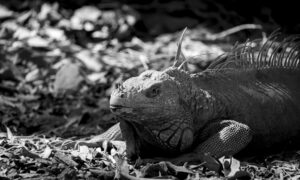The evolution of the duck-billed platypus (Ornithorhynchus anatinus) is a fascinating example of how natural selection and adaptation can shape the development of unique and seemingly bizarre traits in species over millions of years. The platypus is a monotreme, which means it’s one of the few remaining species of egg-laying mammals, and its evolutionary history is a remarkable story of adaptation.

- Ancestral Mammal: The story begins with a common ancestor shared by all mammals. Early mammals were reptile-like and laid eggs, similar to modern-day monotremes. Over time, most mammals evolved to give birth to live young, but monotremes retained the ancestral egg-laying trait.
- Adaptation to Aquatic Lifestyle: Platypus ancestors likely lived in a semi-aquatic environment, where they had access to both land and water. This environment presented unique challenges and opportunities for adaptation.
- Bill Development: The distinctive duck-like bill of the platypus is a result of evolutionary pressure and adaptation to its aquatic lifestyle. Over millions of years, the bill evolved from a simpler snout-like structure to its current shape. The flattened bill with sensitive electroreceptors helps the platypus locate prey underwater, mainly consisting of aquatic invertebrates.
- Webbed Feet: Platypus ancestors developed webbed feet, which are ideal for swimming. These webbed feet are a clear adaptation to their semi-aquatic lifestyle.
- Sensory Adaptations: The platypus has a highly developed sense of touch, which is crucial for hunting underwater. It has receptors in its bill that can detect electrical signals produced by the muscle contractions of prey, allowing it to locate food in the dark, murky water.
- Reproductive Adaptations: One of the most unique features of the platypus is its method of reproduction. Females lay eggs, and after hatching, they produce milk, which they feed to their young by secreting it through mammary glands onto the skin since they lack nipples. This is a combination of reptilian egg-laying and mammalian milk production, which likely evolved to suit their specific ecological niche.
- Evolutionary Isolation: The platypus’s lineage likely became isolated in Australia, where it continued to evolve independently, leading to its unique and distinct characteristics.
- Survival and Success: Over time, the traits that allowed the platypus to thrive in its specific environment were favored by natural selection. Its combination of sensory adaptations, bill structure, webbed feet, and reproductive strategy provided a competitive advantage in its ecosystem, allowing it to persist and thrive.
The evolution of the duck-billed platypus is a testament to the incredible diversity of life on Earth and the power of natural selection to shape organisms to their specific environments. While the platypus may seem like an oddity, it is a product of millions of years of adaptation and evolution, finely tuned to its unique way of life in the freshwater habitats of Australia.







